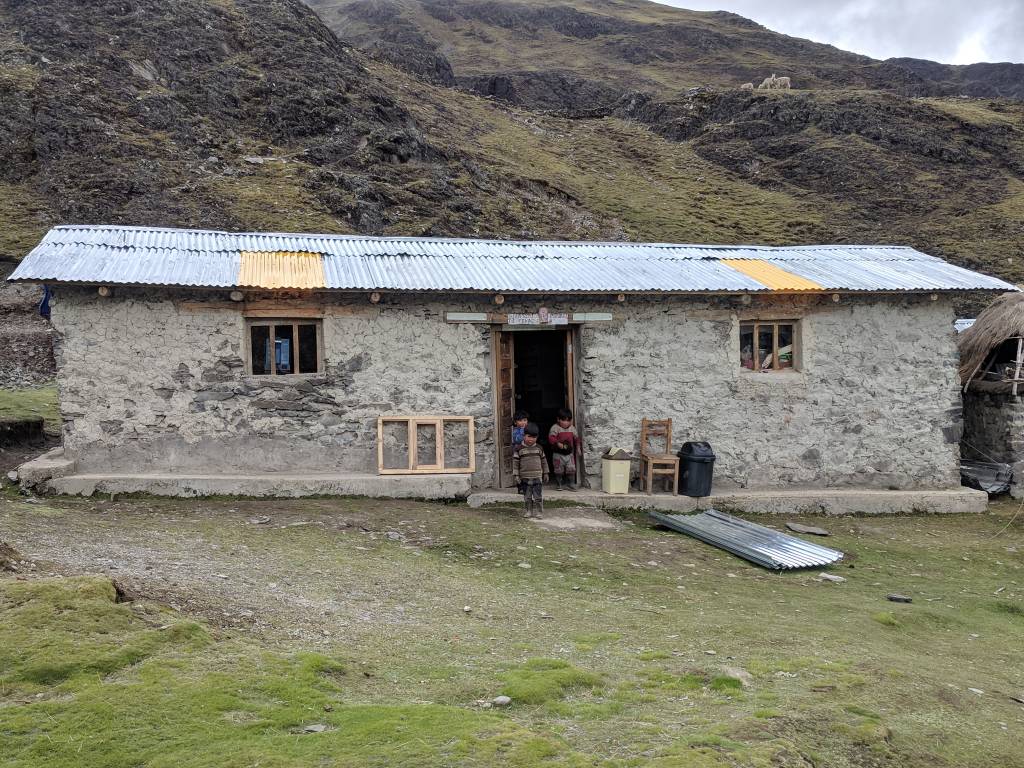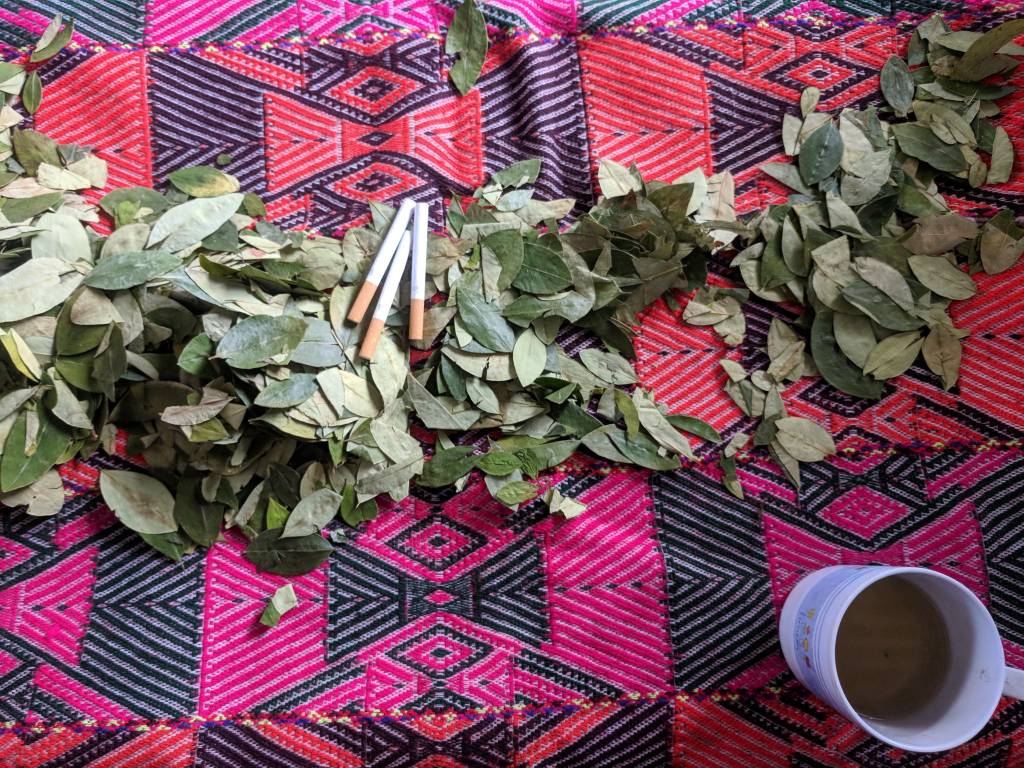
The Q’eros Nation is made up of five communities in the Peruvian Andes, roughly 75 extremely rugged miles east of the nearest city, Paucartambo. An estimated 2,000 people call these communities home, the highest of which rests at an incredible 14,000 feet. Q’ero people are widely known as the last living direct descendants of the Incas, having survived the Spanish conquest by receding high into the mountains. Though they do not follow a specific religion, they are highly spiritual, worshipping Pachamama (Mother Earth) and los Apus (mountain spirits) above all. Before drinking, Q’ero can be seen pouring the first sip onto the ground as an offering to Pachamama.
Quechua, the spoken language of the inhabitants here, is the most widely spoken language of indigenous people throughout the Americas, with a total of roughly 4.4 million speakers in Peru alone. Artisan work with alpaca wool is the main source of income; the ground being too infertile to make a profit from growing crops, let alone produce enough variety in vegetables for a healthy diet. Their main source of sustenance consists of potatoes, alpaca, and the regionally popular coca tea.

About lfe
Traditionally, Q’ero houses have one room where the entire family sleeps, cooks, eats and plays. The roofs are made from tall grasses pulled from the river and dried, so they are required to be re-thatched every six months due to rain and snow. Esperança’s first proposal laid out plans to construct new homes for 15 families in the Q’ero community of Ccoluyo.

Bottle caps and other re-purposed items are used to teach the children to count and crayons are few and far between. Part of Esperança’s proposal included building a home for the teachers and two new bathrooms for the school, complete with showers and running hot water. With temperatures dropping to the low 40s even in the summer, the Q’ero people are accustomed to showering only once a month for the fear of falling ill in houses with no insulation.

Q’eros people has a beautiful complexion and extremely kind eyes. They also have a mouth full of teeth so black and rotten that they looked bound to fall out at any moment. However, when speaking about the change they would like to see in his community, people did not ask for better access to medical services or even a toothbrush. What he did ask for was hot water at their school so that the children could shower without getting sick. Their wants were so simple and selfless that it was hard to stop from saying “yes” right away.

About nation
The Q’ero nation consists of 5 communities, of which Khatun Q’eros is the most important, located at an altitude of 3700 meters. has a social organization similar to the aylus of the Inca period. The Q’ero make up a population of about 2,500 communes, which carry out their productive activities on three specific ecological levels: In the lower part (Monte), maize is grown at an altitude of 1,500 to 2,500 meters. Then we have the middle part (Qheswa), where potatoes are grown at an altitude of 2500 to 4000 meters. Finally the upper part (Pune), where communities raise alpacas at an altitude of over 4000 meters.
Understanding the Q’ero worldview provides insight into the existence of the Andean world, a harmonious way of life and splendor interrupted 500 years ago by the Latin American presence. Scholars and researchers assure that Q’ero presents patterns of social, productive and religious organization intact, preserved in a timeline dating back to the Inca era.
The territory occupied by the Q’ero communities is still considered inaccessible to modern civilization. The road access built in recent decades in the province of Paucartambo has closed the contact of the Q’ero world with the Peruvian state and society. For several centuries, the occupied area of Q’ero was at the beginning of colonial jurisdiction and then independence, farms owned by Creole landowners, by no means succeeding in fully converting the civilian population to the new official religion or to Western education.
An expedition carried out by anthropologists and scientists of ethology and folklore, led by Oscar Nunez Del Prado, could determine in the 60s of the last century the presence of elements, behavior, language, myths and traditions that were recognized as valid since the Inca era, probably was the beginning meeting between the lost world and today’s Western civilization.
Currently, extensive documentation of the Q’ero nation, sociodemographic, linguistic, anthropological and audiovisual research have made it possible to reveal this thousand-year-old cultural heritage to the world. The exposition of current myths aims to contribute to ensuring that Q’ero culture retains its ethnohistorical essence as the heritage of Peruvian culture.
In some mystical circles, it is unfoundedly heard that the Q’ero live at an altitude above “5 thousand meters”, so they are protected by the heights of the mountains and the constant presence of fog in place. The presence of fog obeys the contrast of the cold winds of the Andes with the influx of heat from the upper Peruvian Amazon.
The knowledge and wisdom of the Q’ero were significantly enriched, which cannot be denied, and one must thank the contribution to the spirituality of the Q’ero shamans. Q’ero are a set of shamanic masters, they revere the coca leaf and celebrate offerings with pachamama. In fact, Q’ero has much more culture than just these rituals, this nation has an impressive wealth of folklore, clothing, music and dance. Because the spirituality of Q’ero is necessarily related to the way of life of the Andean people.

